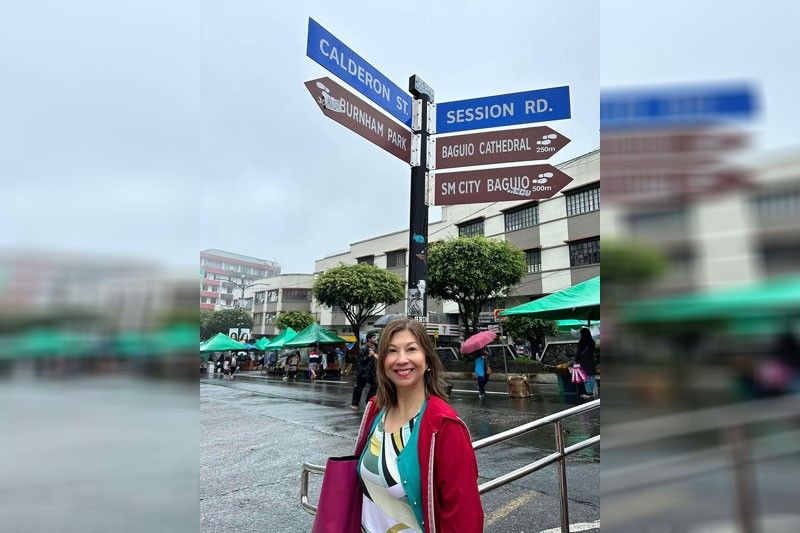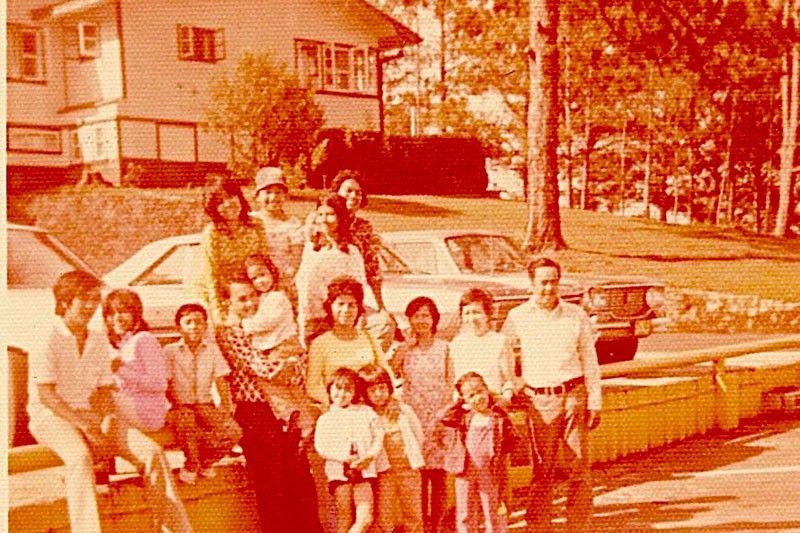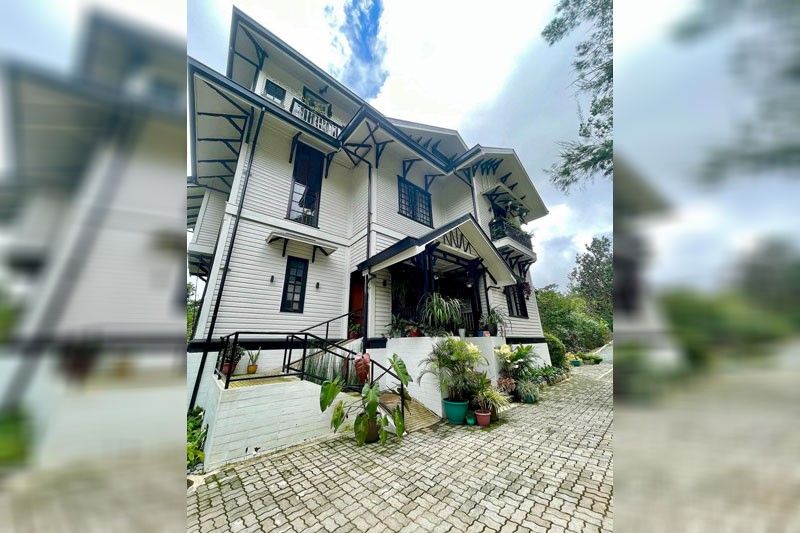Baguio when it rains, pours memories

The centuries-old pine trees are drenched with nostalgia, of summers past, of mist-colored memories.
Baguio was the mecca of summer family outings in my youth, when there was a travel ban to places outside the country — unless you had the connections. Those were also the days when we couldn’t really afford to travel to colder climes. So Baguio was it. It was our summer retreat, our Hyannisport in the pine-scented mountains.
My parents Frank and Sonia Mayor, sisters, close relatives and I would spend summers in the mountains, stay in cottages at Easter Camp. Our posse would have steak at the Officers Club at Camp John Hay (we were allowed entry because of my uncle Col. Elpidio J. Loleng), or sundaes and hotdogs at Mile Hi, breakfast at Star Cafe, and a home-cooked meal of chopsuey with freshly picked vegetable and Baguio longganiza in our cottage. It was also where my senior class had its life-altering (to me, at least) retreat conducted by the late Fr. James Reuter, S.J., in a convent tucked in the hills of Baguio. We were stranded by a storm then, and the Assumption nuns hosted us for another day, and we enjoyed delicious ginisang sayote for dinner as no one could go to the market to feed all 100 of us.

To this day, Baguio remains one of my favorite places on earth, despite creeping urban blight at the seams. The core of the city is as it was, lush with pine trees. And when it rains, a veil of mist embraces the trees, the mountains and nature’s pilgrims, leaving the latter in a cocoon of dreams.

We drove (with our son Chino on the wheel) to Baguio after a pilgrimage to the Minor Basilica of Our Lady of the Rosary of Manaoag, commonly known as Manaoag Church in Pangasinan. Dedicated to Our Lady of Manaoag and first founded in 1600, it was declared a basilica in 2015. So many miracles have been attributed to Our Lady of Manaog, and they say when you think of going there, the shrine is calling you, “Manaoag.”
I am glad, from the depths of my heart, that I answered the call to visit.
***
It would have easily been a 90-minute drive to Baguio from Manaoag on a clear day, but with typhoon Goring pounding on nearby Isabela province, it took us some two hours more, mostly on the last stretch of Marcos Highway leading to Baguio. Mayor Benjamin Magalong, I beg of you, please make the gateway from Marcos Highway to Baguio more inviting! As it is now, it is flanked by vulcanizing and auto repair shops (necessary businesses but perhaps they need some sprucing up?). How about more flower beds, more trees on this doorstep to Baguio? If It were my first time in Baguio after that long drive, and beheld what I did last Saturday, I would have cried. But, knowing that beyond that grid, mist and mountains, trees and restored colonial homes awaited, I was placated. We plodded on till we got to our hotel, the Forest Lodge in Camp John Hay, a good choice. It has great mountain and forest views, spacious rooms (you can pay extra for verandas) and friendly staff. As always, book early.
The Forest Lodge adjoins my favorite restaurant in Baguio, Le Chef by Billy King at the Manor. So consistent through the years, Le Chef lets you bite into memories with every forkful even as you revel in the present. The maître d’ Jojo has been with Le Chef for 19 years now, and he remembers regular patrons and their preferences.
The coffee, brewed from Sagada beans and dispensed from an espresso machine, is the best I’ve had in the Philippines and people who know me know that my day is jumpstarted by coffee. Walking 300 meters from Forest Lodge to Le Chef for breakfast or coffee is worth every step.
I hadn’t been to the Baguio market in over a decade and even if I knew it was a tourist trap I was a willing victim. I am a hostage to memories.
Typical of vendors in a “touristic” area and considering the heavy foot traffic despite the rains (it was a long weekend), the vendors were just all too smart. They sell wispy eco bags for P20 for those who’ve forgotten to bring one, so what you’ve saved from haggling effectively goes there. Farther down, the eco bags cost only P10! Thumb-sized plump strawberries sold at P800 a kilo, plus an extra P10 for the container. But the experience was worth it.
Up and down Session Road we went and instead of walking to the Hill Station for lunch where we had left our car, we decided to take a cab because of our bayongs. It was, as expected, a car-choked maze to Hill Station in Casa Vallejo, which was just on Upper Session Road. Creatures of habit, we had lunch in that familiar restaurant and requested for our favorite table by the window. You won’t be disappointed with the food. Take home their Baguio longganiza — it’s lean and tasty and not sticky sweet.
Then it was time to take siesta, but not before stopping for hot chocolate at Choco-late de Batirol by the entrance to John Hay. I think we waited for 20 minutes for a table. But it was a rustic setting that rewarded our patience, raindrops falling outside the plant-surrounded gazebo, where we had our steaming hot choco bubbly (they churn the cocoa drink in a batirol till frothy). The warmth of heaven!
I skipped dinner that night.
***
On our last day, Chino and his girlfriend Gi-Anne drove 20 minutes away from John Hay to Rebel for breakfast, which has an array of mouthwatering croissants. They took home, upon my request, butter, and gruyere with ham croissants.
No wonder no one of us was really hungry yet when we stopped for lunch at the once reportedly haunted Laperal White House, now a fine-dine French restaurant called Joseph’s. It was our ultimate stop on our last day in Baguio.
I remember as a child, we would ask whoever was on the wheel of the car to drive quickly past the Laperal Mansion lest a “white lady” cross Leonard Wood. Urban legend says there were sightings of her in the distant past, as during the World War II, men and women were tortured in the Victorian-style manor. Tycoon Lucio Tan reportedly bought the mansion in 2007, but never stayed there.
The place is haunting and daunting — the girl at the pedestrian gate won’t let you in right away till you assure her you’re having more than just a cup of coffee inside. Perhaps, they are avoiding curious onlookers.
Beautifully restored, the house, built by Roberto Laperal in 1930, has retained its carved ceilings and hardwood floors, as well as it stately banisters. Each room is now a dining space. We chose the sunroom adjacent to the main dining room. They are also quite strict with your orders. You can’t just have soup, even if that’s all you feel like having since you’re still burping from breakfast. Ed offered to just pay for the salad so he could have his French Onion soup, even if he was not having salad (he doesn’t like wasting food, so he asked that it not be served or packed as it wouldn’t make the trip back to Manila). The waiters, who were respectful, relented. But I was happy with my truffle soup and fried Camembert and my glass of Chardonnay. I loved the breeze from the open windows caressing my face. I loved being with my loved ones.
It was my first time at the Laperal White House, so it’s another page in my memory book. Genteel. Hauntingly charming. Misty. Or perhaps it was just my midday Chardonnay… *
- Latest





























